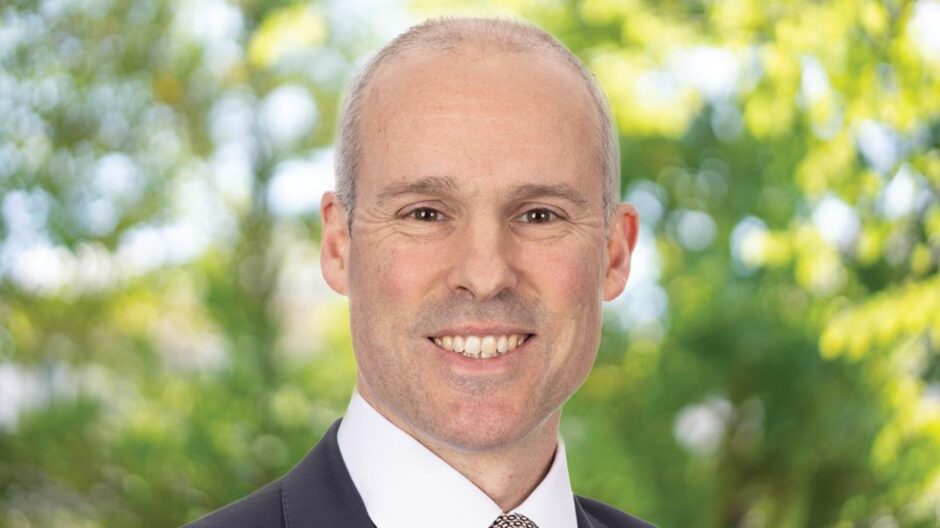
In the second of a two-part interview series, Energy Voice spoke to Ben Wilson, chief strategy and regulation officer at National Grid, to discuss key energy transition challenges and potential innovation opportunities on the UK’s road to net zero.
Energy Voice: What are the potential barriers to the energy transition in terms of infrastructure build-out?
Ben Wilson: These are big projects. We are actually running a campaign internally called ‘Big Work’ just to make sure our workforce is fully aware of the scale of the challenge. A lot of people take for granted the scale of what we do, and we want our people to be proud of these projects.
National Grid is a huge company and we’ve been successful in raising fresh equity capital – actually, the largest equity raise in Europe, outside of the financial sector, in the last 15 years. So, you need significant financial resources to do projects like this, plus a supportive regulatory regime.
In addition, you need technical engineering capabilities and you need the supply chain. So that’s about giving sufficient scale of orders to the supply chain to justify them creating new capacity.
Of key importance is bringing local communities and stakeholders with you, to build awareness around what you are doing and the need for infrastructure.
The energy industry, as you say, is really taken for granted. Maybe the reason why the general public doesn’t show more interest or understanding of it is because it’s so all-encompassing.
We offer really incredible levels of reliability. The transmission system in the UK, the national grid, is one of the most reliable grids in the world. So, in many ways, the fact that people take it for granted is a measure of success.
We want to keep it that way when we build new infrastructure, but we have to make sure that that we’re sensitive to people’s requirements. Every project we do, we engage individually with stakeholders affected by it – but when we are constructing on the scale that the country needs, we also need something bigger.
Through the Great Grid Upgrade we aim to provide people with the wider context of why we’re doing this, and to hopefully reassure people that what we are doing is coordinated – that we have stood back and thought about the overall programme and tried to minimise the overall impact.
What key innovations would you highlight that will be vital to the energy transition? What advancements are really essential to taking things forward?
Let’s take a step back and think about the fundamental problems we’re trying to address, and potential innovation opportunities. As we go through the energy transition, we will be using more electricity than ever before – to power our home heating and transport. To enable that, there’s a significant need for us to expand the electricity grid to meet increasing demand.
That’s the basic issue and we need to do that in the most affordable and efficient way. There are two aspects to that: creating the most capacity in the grid in the most affordable manner and, secondly, managing peak demand so that it’s as low as possible for a given volume of energy.
If you think about it, we build a grid to manage peak demand. If there’s a continual peak in energy demand, we need to construct a larger grid to balance the load and maintain a more consistent energy consumption despite the same overall volume.
If we build the future grid like-for-like, it will need to be four times its current size. If we build it smarter, it will double. That’s a very significant saving there, but most importantly, we still need to build it.
So, there are two key aspects to this. How do we get maximum capacity in the grid, for the best value? There are significant innovative technologies that we’ve been looking at for that: new conductor technologies, lighter conductors, conductors that don’t expand thermally so you don’t have sag. You can maybe then have towers more widely spaced; you can reconduct your existing lines to get more capacity. So new innovative conductor technologies are really important.
TS Conductor is an example of a portfolio company that we’ve invested in.
The core of the conductor is carbon fibre, which does not expand with heat so you don’t get sag. Therefore, you can have a better thermal rating for the lines.
Another example is dynamic line ratings. So again, when we think about the thermal rating of a line you have to assume high temperatures, low wind speed. Actually, for a large proportion of the time it might be cooler than your prudent assumption and there might be some wind cooling. So, at any one time the dynamic rating of the line is probably higher.
So fitting technology can allow us to manage capacity on a dynamic basis and can increase capacity and line vision. Another one of our portfolio companies, Line Vision, has a technology that can do that. We’ve deployed them, for example, in our Upstate New York business, which is connected into the control room.
Tell us about National Grid partners and the role of the NextGrid Alliance.
National Grid Partners is our corporate venture capital fund based in California. Using seasoned venture capital professionals, we invest in energy startups and look to deploy the overwhelming majority of the companies we invest in into our business.
But we also have the NextGrid Alliance. That’s an alliance of about 120 global utilities now. It’s a big benefit for the utilities involved because they get visibility of these portfolio companies. And the companies also get to talk to each other so they can share experiences, they can share problems and solutions on the innovation side and then get access to some of the solutions. So it’s a win-win thing.
How key is that network to the future of the UK, the transition and National Grid’s own work? Or is this more of a bigger picture thing?
Everybody is focused on the energy transition. Everybody, everywhere, is trying to innovate. And I think the NextGrid Alliance is another forum for people to share and to help speed things up.
So is it in itself transformational? Not necessarily. But does it help accelerate? Does it help make connections that maybe would have happened more slowly otherwise? I think it does, definitely.
In terms of National Grid ESO’s evolution to the National Energy System Operator, what are the practicalities there – is there a road map and what are the stops along the way?
The current National Grid ESO will become the new National Energy System Operator (NESO) – it is already operationally separate from National Grid.
So in terms of separation, that is well advanced. It’s going to take on some additional roles, such as planning the role of gas and hydrogen and it will also step up its wider energy system planning role and, together with government, have custody of the Strategic Spatial Energy Plan.
The Energy System Operator today balances the electricity system day to day and gas is separate. To deliver the transformation needed across the energy industry, the NESO will coordinate across the whole energy system, with one single entity responsible for translating policy into strategy. When you consider the scale of the energy transition, there is a need for market mechanisms but also for more long-term planning.
Recommended for you

